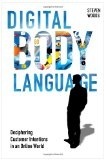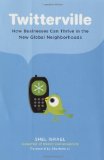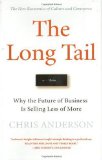PRMM Interview – Ken Molay of Webinar Success
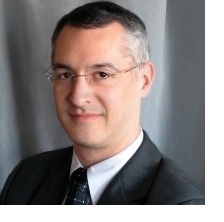
Webinars has become an important toll for marketers. I asked Ken Molay, president and founder of Webinar Success, to share his thoughts on the evolution of webinars, how marketers can best leverage this for their programs, and what to expect in a couple of years. Here is Ken’s bio:
Ken Molay is president and founder of Webinar Success, a consulting firm that assists companies in producing and delivering effective and compelling web seminars. Ken combines a technical background with experience in corporate marketing and public presentations. He is a prolific blogger on the subject of web conferencing and its applications, and has been quoted in the Wall Street Journal and industry publications. He is a frequent public speaker on the topic of more effective webinars.
You’ve been writing about webinars for awhile. What is the most significant change that you’ve seen?
I started using webinars as a marketing tool some ten years ago. At that time, the concept was a novelty. I was constantly explaining what they were. Now webinars are ubiquitous and almost every business person has at least attended one, if not presented one. Attendance rates for marketing webinars used to be very high, averaging 50-60% of registrants. Now they average 33%. People will no longer attend just for the experience of trying out a new learning medium. As usage becomes more common, presenters spend less time and effort on preparation. This is rapidly leading to audience dissatisfaction as they attend more and more online sessions where presenters read text off slides, sound disinterested in their own material, and don’t seem to care about delivering value as much as collecting names and emails on the registration form. Companies who host webinars need to “up their game” and concentrate on creating value for their attendees in both content and presentation.
So webinars have become a key tool in a marketer’s toolkit. What are the top three things that marketers need to consider when using webinars for their programs?
a) The webinar title, promotional efforts, and content MUST be framed in terms of audience interests and benefits instead of the host’s informational content. Instead of telling your audience “We wanted to tell you about our latest offering” you need to tell them “Learning about our latest offering will benefit you in the following ways.”
b) Watch out for the “successful webinar” trap. Many marketing departments try a webinar and get good results on gathering leads and seeing a very positive cost-benefit. So the boss says, “Great! Do one of these a week. This is a cheap lead generating machine!” You end up with “list exhaustion” as people don’t want to attend that frequently and you end up with “presenter exhaustion” as there is not enough time to prepare and rehearse compelling content. Your presenters view it as an inconvenient distraction from their “real jobs”. Quality goes down, your audience stops coming, and your boss gets angry.
c) Your success in turning marketing webinar attendees into sales prospects is greatly influenced by your speed of response after the event. Don’t just dump the registration list into a CRM system for eventual follow up by a salesperson. A “follow up” call or email two weeks later has the same psychological impact as a cold call. You need to send follow up email within 24 hours of your webinar. Immediately following the event, have someone go through the webinar chat log or feedback responses, looking for people who asked a specific product question or requested a contact. Get back to them the same day. Have your supporting material or collateral ready to send… Don’t wait until after the webinar to assemble it.
The space has become more crowded with more vendors and offerings. Where do you see the industry going in 1-2 years?
Video is the hot item of the year. Vendors are rapidly adding what they refer to as “high def” streaming video capabilities to their webinar products. I am comfortable with presenter video in smaller team meeting applications, but I am not a fan of live video for public marketing webinars. It puts a tremendous additional burden on the presenter, who cannot easily move around, look at notes, or check the web conferencing console without breaking eye contact with the audience. It is harder to create a professional corporate image with video because of the many subtle visual cues we respond to as viewers without consciously realizing it. Video also demands much more bandwidth, and companies run the risk of excluding or delivering subpar experiences for attendees with slower network connections. So I think we may see a wider adoption of video conferencing initially, followed by a pullback (at least for marketing webinars) while companies wait for infrastructure to catch up and for their production teams to learn a new set of best practices.
The other trend I see developing is a desire for easier monetization of webinars. This does not directly affect marketing webinars, but many companies want to deliver fee-based training, consultation, and support to a wider audience than they can reach with in-room seminars. There are not enough technology choices and integrated features in the market to make this easy and cost-effective to implement.
Have you leveraged webinars for your program? If so, share your successes, lessons learned and more below.
Rise of Social Commerce – Nielsen and Hallmark Summaries
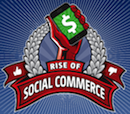 I attended the second day of the Altimeter Group’s Rise of Social Commerce conference last week. This is the second post summarizing the sessions at the conference. The first highlighted Charlene Li’s Open Leadership presentation.
I attended the second day of the Altimeter Group’s Rise of Social Commerce conference last week. This is the second post summarizing the sessions at the conference. The first highlighted Charlene Li’s Open Leadership presentation.
Nielsen – Social Media Does Correlate to Sales
Pete Blackshaw of Nielsen provided some stats and insight into the role of mobile and social media on commerce. The key message is that social media does correlate to sales. Whether it’s the trigger for the sale or the function of the echo chamber, Pete’s message is that it still correlates to sales.
Of the stats that he presented, these caught my eye:
* mobile phones will overtake PCs by 2015
* main ways to discover is through search and Word of Mouth
Implications for Marketing and PR
These stats demonstrates the importance of evaluating the ways we reach and connect with audience through our marketing and public relations efforts. Understanding the trends that trigger word of mouth are more important than ever to determine what will drive business forward. As Pete stated, “Many social conversations begin offline.”
Being able to tap both online and offline conversations, while helping your clients be found in the way that audiences want to find you, will become a more integral part of our jobs.
Hallmark – Blazing the Trail
Camille Lauer of Hallmark provided a different perspective – how a traditional card company is moving into the social arena. the company’s goal is to have people consider Hallmark beyond major holidays to every day moment. The challenge, according to Camille, Hallmark, is being sensitive to their physical, retail business and franchises.
Creating an Authentic Voice
Camille was very forthright on what worked and didn’t work as they cautiously moved into the social arena. Their goal was creating a more authentic voice that resonated with their audience. As part of this effort, they launched card contests, inviting their audience to submit unique cards. One winner would then be selected to have his/her card produced for the Shoebox line.
While the card contests were a hit, they quickly realized that their community wanted to hear from Hallmark. The Hallmark team began filming behind-the-scenes videos to share the card selection and judging process with their audience. This allowed their audience to connect more with the company and engage in an ongoing conversation.
Keeping It Simple – Facebook App
Yes, the physical card company does have a Facebook App – the Hallmark Social Calendar. For Hallmark, the goal is to translate emotions into bite-sized goods and virtual gifts. At first, the company added a lot of bells and whistles and realized that people only wanted a simple calendar.
The company also learned to encourage engagement with the audience (earn points through activity with the application) and how people wanted to pay for the virtual gifts.
Conclusion
Pete’s presentation provided great insight into how consumers are discovering and purchasing goods, while Camille highlighted how a 100 year-old company is moving into the digital arena. In the end, no matter what you do or create, you have to keep the customer center throughout. It’s amazing how often we forget that as marketers and PR professionals.
Are you currently implementing a mobile marketing strategy or have used the Hallmark Social Calendar? If so, share your experiences below.
Rise in Social Commerce – Charlene Li’s Open Leadership Session
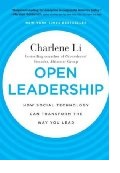 I had the opportunity to attend the second day of the Altimeter Group’s Rise of Social Commerce conference yesterday. After listening to the sessions and speakers, I realized that social commerce, in many ways, is still in its infancy when compared to the best practices and data available for “traditional” retail. With that said, I anticipate that the gaps will be closed quickly. This is the first of a couple of posts summarizing the sessions at the conference.
I had the opportunity to attend the second day of the Altimeter Group’s Rise of Social Commerce conference yesterday. After listening to the sessions and speakers, I realized that social commerce, in many ways, is still in its infancy when compared to the best practices and data available for “traditional” retail. With that said, I anticipate that the gaps will be closed quickly. This is the first of a couple of posts summarizing the sessions at the conference.
Social is about relationships
While I haven’t read Charlene Li’s recent book, Open Leadership: How Social Technology Can Transform the Way You Lead, I am keen to add this to my reading list soon. Charlene began her presentation discussing relationships.
To paraphrase, “Social is about creating and deepening relations. And business is all about relations. If one is in a relationship, then you can’t control the relationship. Rather social commerce provides organizations a way to deepen their customer relationships beyond transactional loyalty.”
Rethinking Leadership
According to Charlene, leadership may no longer be those who sit on top of the hierarchy chart. Rather, leaders are those who can impact the organizations based on their institutional knowledge and ability to make connections to get things done.
For example, Starbucks invited consumers to share their ideas regarding new products or improvements for the company. While the company could’ve taken these suggestions and provided minimal input, the company ensured that decisions were transparent to everyone. This required creating a team of more than one person – identifying those from different parts of the organization who 1) could provide insights into the process while 2) connecting with customers in real-time.
Social Discipline and ROI
Charlene concluded her presentation by highlighting the importance of discipline for social media, as well as reevaluating social media’s ROI.
The discipline is not about leveraging the tools regularly and consistently, but rather about understanding the flow of information through your social media process. When this discipline is in place, then you know how to manage emergencies, while gaining a three-dimensional view of your customer.
“We tend to overvalue things we can measure and undervalue those we can’t”
– CMO of American Express
With regard to ROI, Charlene urged the audience to consider a lifetime calculation that captures more of the behavior of customers, such as referrals, versus short-term results. This will help organizations see the value of a long-term relationship and invest mare into the relationship.
Conclusions
Many of the panelists highlighted how internal leadership was integral to spearheading their social strategies. Charlene’s presentation provided a glimpse into the entire value chain of how organizations can identify and tap “leaders” via social technologies, which in turn drives the relationship with customers in an increasingly social ecosystem.
Push versus Pull for PR and Marketing

Last week, I read two very good blogs posts from Tim Dyson (The end of Push PR/Marketing) and Beth Harte (Dear Marketing & PR Pros: You’re still pushing) regarding the broadcast tendency of public relations and marketing professionals.
In Tim’s post, he explores how social media is providing brands an opportunity to shape existing online conversations. As he writes, “shifting the debate is a way of shaping a conversation” and I agree with him.
The rapidly changing technology landscape has changed the way we consume and receive content. No longer can a brand buy air time on the big three TV networks and own the messaging. The ability to engage customers directly is an opportunity for brands to become part of the conversation. But this requires transparency and dedication to listen to what customers have to say versus reverting to our natural tendency to defend.
Or as Beth writes, “… marketing and PR practitioners still approach customers socially as if we are going into battle with them.” She raises the good point that PR and marketing professionals are still unfamiliar with the concept of “people relations.”
Conclusion
I would like to conclude with the comment that I left on Beth’s post:
“Whether PR practitioners or marketers, this is an interesting dynamic. The focus, for the most part, is on accumulating followers, fans and/or readers as a way to drive one’s own marketing messages. I’ve rarely seen true engagement on the level that Zappos does with its customers.
Which leads to another point to explore. We’re discussing who owns social media as part of the marketing or PR function. While marketing or PR can initiate the program, I believe that full participation of the entire organization is required to truly have a successful program.
For example, if your goal is to improve your net promoter scores, you have to get customer service involved. Otherwise, there will be a disconnect for consumers who are receiving one message from marketing and PR lead social media campaigns but experiencing something different with customer service.
So I would add to your point Beth – “Know why you are doing so and only do it when it makes the most sense. Stop with the shotgun approach.” And make sure that the right stakeholders are also on board and participating.”
What are your thoughts on this topic? Do you agree or disagree?
Photo Credit: via Flickr by Robert S. Donovan
Update on Trusting PR Agencies without a Social Media Presence with Your Social Media Programs
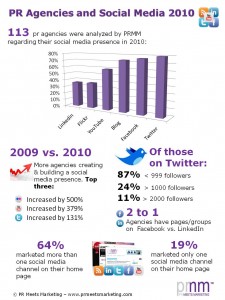 In February 2009, I wrote a post titled “Would YOU Trust a PR Firm without a Social Media Presence with Your Social Media Programs” to determine how many agencies were active in social media.
In February 2009, I wrote a post titled “Would YOU Trust a PR Firm without a Social Media Presence with Your Social Media Programs” to determine how many agencies were active in social media.
While anyone who establishes a Twitter account or LinkedIn Group is not automatically an “expert” on social media, I do believe that you should practice what you preach. This point, as well as the role of a corporate presence vs. individual contributors, generated a lot of discussion.
Since the original post, my position about individual contributors has evolved. I believe that employees are an integral, if not essential, part of a successful social media strategy. However, to simplify the data gathering and analysis, I opted to focus on corporate presences, recognizing that multiple individuals are contributing on behalf of the agency.
I’ve included a slideshare presentation below, images on flickr that you can share (including the infographic to the left), and the list of PR agencies accessible via Google Docs (All changes for 2010 are indicated in red. Please feel free to make an update and include a comment below).
Key Findings: PR Firms More Social in 2010
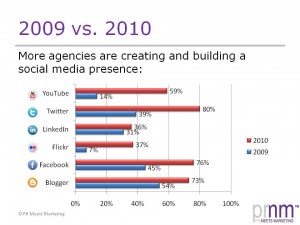
* PR agencies increased their social media presence in 2010, with Flickr (500%), YouTube (379%) and Twitter (131%) demonstrating the largest increases respectively.
* While most agencies didn’t link to their social media channels on their website in 2009, 83% included this on their home page in 2010.
* Twitter was the most popular social media channel, with 80% of PR agencies having a presence. 35% had followers numbering over 1000.
* 2 to 1, PR agencies had a Facebook Page or Group vs. a LinkedIn Group Page
Conclusions: What a difference a year makes
In just over 18 months, PR agencies have increased their presence on several social media channels. While content was not evaluated as part of this review, some agencies leveraged Flickr and YouTube to promote their clients. This raises an interesting issue about agencies becoming an active publishing entity.
If a PR agency ammasses thousands of followers or create a highly-ranked/influential blog, will it have the potential to become an informal media outlet itself? And if so, how will PR agencies manage this changing landscape? What do you think?
Methodology
I initially evaluated PR firms listed on O’Dwyer’s list of top 100 independent PR firms. This list was based on worldwide fees for firms with major US operations. As such, some prominent firms, such as Ogilvy & Mather, Ketchum PR and others. An additional 13 firms, who had proactively added their information to the PR Firm Social Media Wiki, were added to the 2010 review, yielding a total of 113 firms.
* I looked at if the agency had a blog, Twitter profile, Facebook page (both group and/or fan), LinkedIn Group, YouTube Channel or Flickr photostream.
* I didn’t categorize the type of PR each firm did – I took the list at its word
* If the blog wasn’t listed on the home page or easily found via a sitemap, I assumed there was none
* I searched on the agency’s name or common abbreviation as presented on their website. Anything more exotic or too cute, would not have been found
* For Twitter, I used Twitter search or tried to manually type in what seemed like an appropriate Twitter handle. Number of followers were based on number the week of September 20, 2010.
* I used the group search functions found on Facebook and LinkedIn respectively. I was looking for those who had proactively created a group page or claimed their fan page on Facebook. As such, LinkedIn Company pages were not included.
PR Is So Easy that Even a Caveman Can Do It
 You’ve probably seen the commercial about how Geico’s insurance is so easy, that a caveman can do it. The same is said about public relations. All you need to do is write a press release, distribute it over a wire and presto, media coverage will come. Or you just need to send an email to a reporter to have it instantly printed or broadcasted.
You’ve probably seen the commercial about how Geico’s insurance is so easy, that a caveman can do it. The same is said about public relations. All you need to do is write a press release, distribute it over a wire and presto, media coverage will come. Or you just need to send an email to a reporter to have it instantly printed or broadcasted.
While there are instances that this does happen, I think this overlooks how PR is more than securing coverage in the media. PR is an integral part of a company’s marketing team and provides incredible value when done well:
Message and Positioning
As outside counsel, public relations professionals bring fresh eyes to the company, product/service and industry. With a fresh perspective, we help executives refine their key messages and value proposition to their key audiences. We also help define the company’s position in the marketplace to help differentiate it from its competitors.
Building Relationships
We oftentimes overlook the importance of building relationships with the right influencers as an objective of PR. While reporters are a key target of relationship-building, PR professionals also can identify and introduce companies to other influencers (analysts, authors) and prospective partners and customers.
Customer Relations
Customers are the cornerstone of a successful business. PR professionals collaborate with clients and its sales team to identify and contact customers for marketing and PR efforts. This provides an additional channel for the company and customer to interact after a product/service has been delivered. And by telling the customer’s story, the client has a positive story to use for press and sales purposes, the customer is seen as a hero within his industry, and the sales person strengthens her relationship with that customer. It’s a win-win for everyone.
Conclusion
Beyond a media hit, PR has other tangible benefits for companies – message and positioning, building relationships, and customer relations. Now tell me, do you really want a caveman to handle these?
Any other areas that you’ve found PR instrumental?
PRMM Interview with Miguel Arias of Imaste on Virtual Events and Future Developments
As I believe virtual events will or have already become an integral part of a marketing strategy, my goal is to highlight how to leverage this technology most effectively to achieve your communications and marketing objectives. In the essence of full disclosure, I was previously employed by two vendors in this space (Inxpo and On24) and am currently assisting Virtual Edge Institute for their January Summit in Las Vegas. I hope to engage key vendors and thought leaders in the space with more Q&A’s to follow. To kick off the series, I interviewed Miguel Arias of Imaste, a leading provider of virtual job fairs and tradeshow platforms based in Europe, via Skype and over email.
 Miguel Arias is co-founder and COO of IMASTE. Miguel is also a proactive start up mentor, integrated in the Instituto de Empresa Business School Venture Lab programme. Miguel holds a MSc Degree in Civil Engineering from the Universidad Politécnica de Madrid, and a Professional MBA from the Instituto de Empresa Business School, and is fluent in 4 languages. You can read his thoughts about the industry on his blog or follow him on twitter (@imasteips or @mike_arias).
Miguel Arias is co-founder and COO of IMASTE. Miguel is also a proactive start up mentor, integrated in the Instituto de Empresa Business School Venture Lab programme. Miguel holds a MSc Degree in Civil Engineering from the Universidad Politécnica de Madrid, and a Professional MBA from the Instituto de Empresa Business School, and is fluent in 4 languages. You can read his thoughts about the industry on his blog or follow him on twitter (@imasteips or @mike_arias).
Tell me about Imaste and how you began
Imaste is Europe’s leading specialist in virtual events, fairs and trade shows. Since its launch, we have delivered more the 100 virtual experiences in more than 15 countries. Imaste has strong partnerships with some of the major job boards across the globe, as well as with global corporations and interactive agencies, with a strong focus in the European and South American markets.
We started with physical job fairs and then moved to virtual, starting our work in Spain, and expanding afterward in the main European markets. We started by managing all the aspects of a physical event from organization, conception, logistics, sales, marketing to execution. We saw the real needs of our customers to go virtual and how they could benefit from technological platforms to obtain better results. 30 percent of our business is still physical with 70 percent virtual.
One of our first international clients was Monster, which provided us more awareness and an opportunity to work in many regions in a short period of time and also cooperate with other leading job boards, like curriculum.com.br in Brazil, Dridco in Argentina, Venezuela, etc.
Our market to date is 60-70% virtual job fairs and 30% mainstream tradeshows, with little demand for corporate events at this time. We’re strongly diversifying our reach; delivering more and more generic virtual trade shows (MBA trade shows, entrepreneur virtual events, franchising events, automotive industry trade shows…)
Does your physical background provide you an advantage?
We believe delivering a great virtual event is not just about the number of features or backend capabilities. It’s more about delivering a live experience that is equivalent to real life, and we’re experts in that.
Our solutions have an engaging look & feel and interface design, compared to other applications. Our attendees experience the feeling of taking part in a real event, where they can interact with others, learn, share and network. While other American competing platforms may have more reporting or data mining tools, we are focused on the user experience and real results gathering.
Is this all custom work?
Actually not. We completely customize the look and feel of our virtual events, and we also offer a great array of customization possibilities in the platform configuration and 3D environment set up. But we offer each exhibitor a complete backend to manage their content, leads and live interactions.
We will organize about 70 events this year in more than 18 countries. Therefore we have gathered a lot of experience in language customization, adaptation to cultural differences in many regions and server and data integration with various systems and infrastructures.
What is your webinar technology?
We have our own webinar application, but we have seen great apps being developed out there. Therefore we integrate our platform with other solutions. We also integrate with other type of applications such as Ustream and dimdim.
We believe that most of the virtual event platforms will be able to integrate with many of the existing webinar solutions in the future, therefore webinars are going to be a commodity in the market.
Tell me about a typical event?
We usually deliver main stream events that are open 7-10 days with 40-80 exhibitors for an event. We have an average of 100,000 unique visitors per event with a maximum of over 300,000 unique users and peaks of 80,000 users a day in Argentina. We’ve had simultaneous chats up of 1,000 attendees.
The landing page, interfaces look & feel and even 3D environments are customized on a case by case basis. For each client work, we work as an agency, offering training and continuous technical and operations support, which helps the client.
We also offer orientation tests, which is a compatibility test that matches an attendee with prospective exhibitors that match his or her profile. This is used for all kind of trade shows, not just virtual job fairs. We narrow down the best prospects and affinity based on the responses. The exhibitors then also provide their responses which is how the matching works.
This information is stored in the attendee’s profile. The companies can also view the matches for follow up for sales and recruitment pre-screening.
What is the cost for your events?
We deliver low-end, basic solutions with look and feeling customization, but no registration or feature customization. Using one of our templates with basic functionality and 25 exhibitor booths the cost is about US$12,000.
High-end, standard solutions with complete functionality (registration tool, real time written and video interaction, orientation tests, etc), some degree of customization and around 40 customers is about US$30,0000.
If we incorporate video production and complete customization, then this can be up to US$60-80,000.
What is the timeline for an event?
We can develop an event in one month and the bottleneck normally is on the client side, in their sales process. Normally we provide marketing training, sales training and logistics training to communicate the work load and the expectations. A virtual event is not just a fancy website. The partner needs to understand how dynamic the event is. Sometimes in Spain, we even do the sales and logistics.
We are a partner throughout the whole process, providing timelines, documentation, control, etc.
What are your future plans?
We go where the client needs us. We have created corporate environments and believe there is more need for all kinds of virtual trade shows, not just virtual job fairs.
Till now, Europe doesn’t have much business in virtual events, but this is rapidly changing. We will face the challenge to remain leaders when the market consolidates and the American players start their operations here. But Europe is a difficult market, with many particularities, and we have the experience, contacts and resources to grow in our own playground.
We plan to deliver some events in the US by the end of the year, but our main market is Europe and South America.
Where do you see the industry going?
A definite trend is that most physical events are going hybrid event, as physical want to go virtual with tighter integration. As an attendee, you’ll go to a physical exhibit and shout your experience in Facebook, while you favorite some content virtually and gather physical samples. You’ll have networking in virtual and meet in physical.
We are continuously developing our platform; in the next weeks we will announce the new version, with many exciting new features. We are moving into full screen mode with more smooth video integration and much more.
We do not believe in avatar based immersive technologies for virtual trade show purposes, As users lose so much time learning how to set up their avatar and walking around, and the event is about getting information and interaction as soon as possible.
There will be an increase in networking, in 3D experience, physical virtual connection, and interaction (better chat, 1:1, etc.).
In the end it’s all about online collaboration with real time interaction and communication tools in 3D alike intuitive environments, having a sense of being there, then.
About
Favorite Service
Recent Comments
- on Going Virtual Isn’t Necessarily the Answer to Replacing Your Physical Events
- on Going Virtual Isn’t Necessarily the Answer to Replacing Your Physical Events
- on Going Virtual Isn’t Necessarily the Answer to Replacing Your Physical Events
- on Going Virtual Isn’t Necessarily the Answer to Replacing Your Physical Events
- on Going Virtual Isn’t Necessarily the Answer to Replacing Your Physical Events
Ads by Google
Favorite Books
Marketing Blogs
PR Blogs
- KD Paine's Measurement Blog
- Micro Persuasion
Virtual Events & Meetings Blogs
- Cisco Virtual Environments
- It's All Virtual
- The Webinar Blog
- Virtual Edge Institute

 Follow
Follow Cece Salomon-Lee is director of product marketing for Lanyon Solutions, Inc. and author of PR Meets Marketing, which explores the intersection of public relations, marketing, and social media.
Cece Salomon-Lee is director of product marketing for Lanyon Solutions, Inc. and author of PR Meets Marketing, which explores the intersection of public relations, marketing, and social media. 